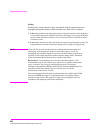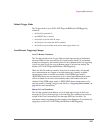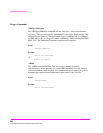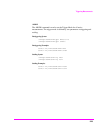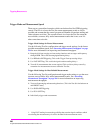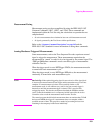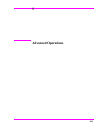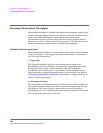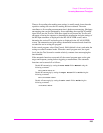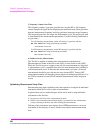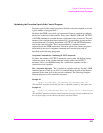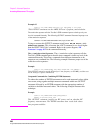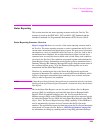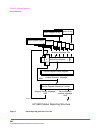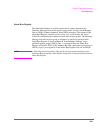
234
S:\agilent\8920\8920b\PRGGUIDE\BOOK\CHAPTERS\advoper.fb
Chapter 5, Advanced Operations
Increasing Measurement Throughput
Increasing Measurement Throughput
Measurement throughput is defined as the number of measurements made per unit
of time. When operating the Test Set in the Internal or External Automatic Control
Mode, measurement throughput is influenced by measurement speed,
measurement setup time, and execution speed of the control program. Each of
these factors is, in turn, influenced by several parameters. The following sections
discuss the parameters and their effect on measurement throughput.
Optimizing Measurement Speed
Measurement speed is defined as the time required to complete one measurement
cycle after receipt of a valid trigger event. Measurement speed is influenced by
the following four parameters.
1. Trigger Mode
The Trigger Mode affects the time-to-first-reading and the length of the
measurement cycle and is defined by two parameters: retriggering and settling.
Retriggering refers to what a measurement does once it has completed a
measurement cycle. Settling refers to the amount of delay introduced to allow
signal transients to propagate through the analysis chain and settle out. Refer to
“Triggering Measurements” on page 224 for information on Trigger Mode and its
impact on measurement speed.
2. Autoranging/Autotuning
The autoranging and autotuning functions continuously calculate and adjust gain
and frequency tuning settings to provide the optimum instrument setup for each
measurement. This results in greater measurement accuracy but increases
measurement cycle time. The autoranging and autotuning functions can be turned
off to decrease the measurement cycle time.



